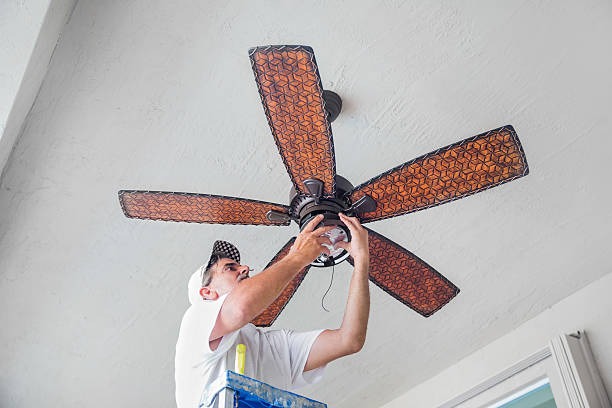If you want to enhance your outdoor space, installing a fan can be a smart way to boost comfort, improve air circulation, and make evenings more enjoyable. The outdoor space can be a covered porch, patio, or pergola, and adding a fan brings both function and charm into the space. When choosing a fan, it is important to know that not all fans are created equally, and choosing the wrong one can lead to frustration and waste of money.
Many people rush their decisions when thinking of buying outside ceiling fans. And they tend to miss out on details such as materials, airflow rating, and installation requirements. A fan that is designed for indoors will not be able to withstand outdoor conditions. In this article, we’ll explore the top mistakes most people make when buying a fan for outdoor use.
1. Choosing the Wrong Material
Talking about the outdoor fixtures, materials matter more than you think. Factors like moisture, temperature swings, and even salty air can damage a fan made with the wrong components. For instance, the metal parts might rust, blades can warp, and finishes may fade or peel.
Fans that are used in covered patios might need to handle only the humidity. But if it is the ones that are exposed to outer areas, they should resist direct rain. Blades that are made of ABS plastic or specially treated wood alternatives tend to last longer and hold their shape better outdoors.
2. Not Considering the Fan’s Damp or Wet Rating
Outdoor conditions are different; similarly, the ratings for ceiling fans are also different. There’s a major difference between damp-rated and wet-rated models. Overlooking those differences can lead to early damage or electrical hazards.
- Damp-rated fans work well in covered areas protected from rain.
- Wet-rated fans are built to handle direct water contact, even during heavy storms.
If you’re planning to install the fan above a pool deck, open pergola, or exposed veranda, a wet-rated design is best-suited. Damp-rated options might seem attractive, but they simply aren’t built to withstand serious moisture in outer space.
3. Not Measuring Properly
One of the most common mistakes people make while buying an outdoor fan is choosing the wrong fan size. If it is too small, it won’t move enough air, whereas if it is too large, then it can overwhelm a compact area or seem out of place. It is necessary to measure the square footage of your space before buying.
For areas that are up to 144 square feet, a 42-inch fan might be enough. Larger patios might need 52 inches or more. Also, do not miss out the ceiling height. You should have enough clearance between the blades and the floor, ideally 7 feet or higher, for safe working.
4. Ignoring the Importance of Airflow
A fan is not just a decorative fixture; it should move air effectively. Many buyers focus on the design without checking the airflow rating. This rating will usually be listed in CFM (cubic feet per minute). If the CFM is higher, then the breeze will be stronger. Outside fans should offer higher airflow than the ones that are used indoors. This is because there are not many walls in the outdoor areas, so the breeze can disperse more quickly.
5. Forgetting About the Controls
The controls of your fan can make or break your experience. Many people install a fan without even realizing that it can’t easily adjust the speed or direction. Some outdoor fans come with wall switches, others with remote controls, and a few are compatible with smart systems.
Before purchasing a fan, think about where the controls will be used. Will the place be protected from moisture? Can they reach the fan from a distance? If it is a remote control one, ensure that it’s waterproof and stored in a safe spot. Usually, outdoor wired switches are more reliable, especially in exposed areas.
6. Overlooking the Seasonal Use
Along with the other aspects, it is also essential to think about the year-round use. Some fans offer reversible blades that will push warm air downward during cooler months and vice versa. Some might have lights for evening gatherings, or also have timers to shut off automatically.
If you plan to use the space throughout the year, make sure your fan supports seasonal changes. Choosing the features that suit your lifestyle will help you buy the fan smartly. The right option can serve multiple purposes beyond warm-weather relief.
Outside ceiling fans are always a valuable addition to any outdoor living space, but buying the wrong one can lead to a waste of time, effort, and money. Paying attention to the material quality, airflow, control systems, and installation needs, you can avoid the most common mistakes most people make. A little planning goes a long way toward creating a comfortable, stylish, and lasting environment.

